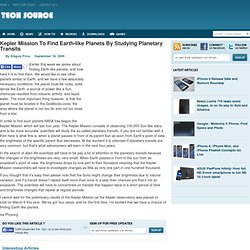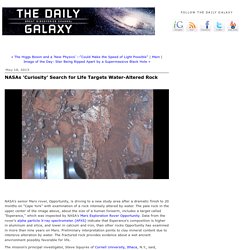NASA
THE SOLAR SYSTEM. The Hubble Heritage Project Website. Hubble 25 Anniversary. HubbleSite - Out of the ordinary...out of this world.
Download NASA's Eyes. NASA image service. NASA Technology Transfer Portal. Photos - Camilla, un poulet en caoutchouc devenu vedette de la NASA. Avez-vous déjà partagé cet article?

Partager sur Facebook Partager sur Twitter Pour sensibiliser le public à sa mission d’étude, l’Observatoire des dynamiques solaires (SDO) de la NASA a mis en scène un personnage quelque peu particulier : un poulet en caoutchouc qui rêve de s’envoler dans l’espace. Camilla Corona aurait pu rester une simple et anonyme cocotte de caoutchouc destinée à divertir les animaux de compagnie, toutefois le destin en a voulu autrement. Aujourd’hui, le poulet est devenu la mascotte du département en charge de l’Observatoire des dynamiques solaires (SDO), un satellite développé par la NASA et lancé en 2010 pour étudier le soleil.
Sa mission quotidienne consiste à partager ses expériences à travers les différents réseaux sociaux sur lesquels la suivent plus de 20.000 internautes. Dans un entretien téléphonique, il confie à Wired : "J’espère pouvoir emmener Camilla à la Station Spatiale Internationale et lui apporter une bonne visibilité".
Humans Visit Space
Other Space Trees. Space Personalities. MODIS Website. Kepler Mission To Find Earth-like Planets By Studying Planetary Transits. Earlier this week we spoke about finding Earth-like planets, and how hard it is to find them.

We would like to see other planets similar to Earth, and we have a few absolutely necessary conditions: the planet must be rocky, solid, dense like Earth, a source of power like a Sun, chemicals resulted from volcanic activity, and liquid water. The most important thing however, is that the planet must be located in the Goldilocks zone, the area where the planet is not too far and not too close from a star.
In order to find such planets NASA has begun the Kepler Mission which will last four year. The Kepler Mission consists of observing 100,000 Sun-like stars, and to be more accurate: scientists will study the so-called planetary transits. If you are not familiar with it then here is what this is: when a planet passes in front of its parent Sun as soon from Earth’s point of view, the brightness of the specific parent Sun decreases.
Moon Map (Lunar Map) with the names and locations of the Maria and major craters. NASAs 'Curiosity' Search for Life Targets Water-Altered Rock.
This rock's composition is unlike any other Opportunity has investigated during nine years on Mars -- higher in aluminum and silica, lower in calcium and iron.

"Based on our current solar-array dust models, we intend to reach an area of 15 degrees northerly tilt before Opportunity's sixth Martian winter," said JPL's Scott Lever, mission manager. "Solander Point gives us that tilt and may allow us to move around quite a bit for winter science observations.
" Northerly tilt increases output from the rover's solar panels during southern-hemisphere winter. Daily sunshine for Opportunity will reach winter minimum in February 2014. The rover needs to be on a favorable slope well before then. The first drive away from Esperance covered 81.7 feet (24.9 meters) on May 14. "There appears to have been extensive, but weak, alteration of Whitewater Lake, but intense alteration of Esperance along fractures that provided conduits for fluid flow," Squyres said.
Extreme Planet Makeover. NASA Advanced Search. NASA SBIR & STTR Program Homepage. Astro101.
Bodycard 0129
-
dr_oropeza Oct 23 2013
I am very much delighted to join you. Nice day.
-
dennismirandadelrosario Jan 31 2013
Pleasant day,team NASA.I suggest we include space academies whre NASA may have direct or indirect involvement either thru existing or past astronauts;please vote
-
electronics Nov 10 2012
Okay, I will kick it off with some stuff on the moon, and the members here--and you (pdk117) can--decide where such a pearltree might belong. I think it belongs under international efforts rather then under NASA though (Helium-3 might need to be a part of our energy future). Here is my information on The Moon that might interest you:
-
pdk117 Nov 4 2012
I think they are both axceptable ideas and they should be commended for coming up with such wonderful ones. Thanks Gharr
-
electronics Nov 3 2012
griffo17 says they are new to pearltrees; and are interested in discussing a collection based on "possible" moon bases. jeanvasquez replies to that: This team is for people interested in information from NASA: such as new projects and other things. I hope that helps pdk117. My Best Wishes Gharr
-
jeanvasquez Oct 25 2012
Sorry he just want to know more about the pearl and he don't speak a lot English
-
jeanvasquez Oct 23 2012
Aqui hay muchas personas yo soy UNO de Los que creo este pearl me puedes buscar en. Tweeter or Facebook jean031089@live.com y Si quieres mas information sobre Pearltrees te puedo ayudar
-
griffo17 Oct 23 2012
Buenisimo, sume una Pearls con muchisima informacion sobre "posibles" bases en la Luna, no es cualquier info, la investigue durante horas y hay mucha coherencia en lo que dice. Estoy armando una investigacion sobre ello. Por cierto soy de Argentina, me gustaria tener algun contacto mas directo con ustedes. T.´.A.´.F.´.
-
jeanvasquez Oct 23 2012
Este team es para personas interesadas en informaciones de la NASA como Nuevo projectos y cosas haci
-
griffo17 Oct 23 2012
Hola, soy nuevo en esta pagina. En que consiste este Team?



